Tropicsport Mineral Sunscreen SPF 30: A Surfer's Review
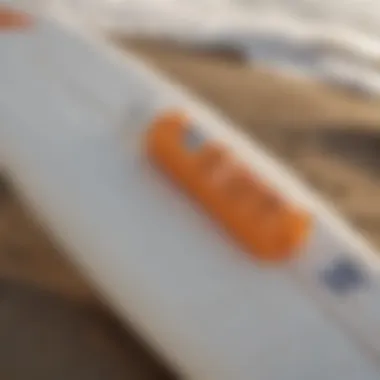
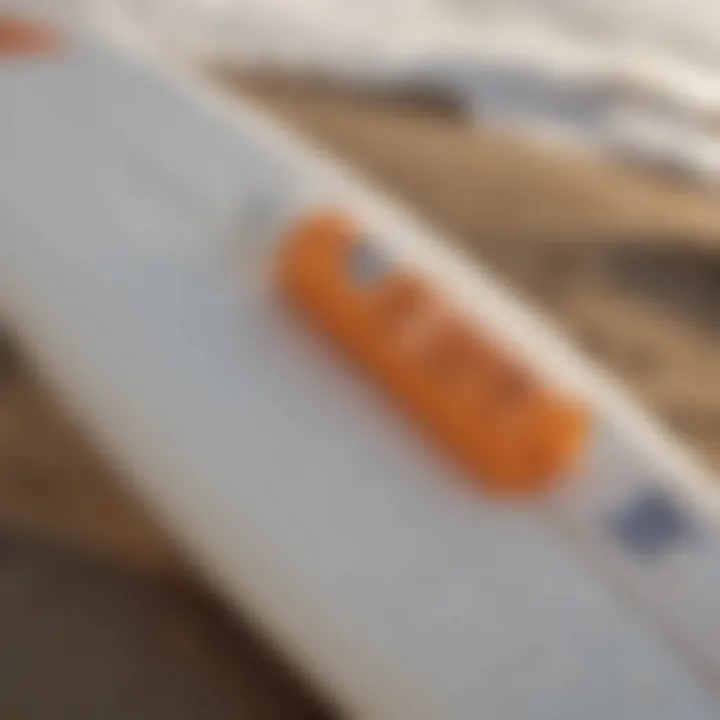
Intro
When surfers hit the waves, they’re not just battling the ocean. They’re also contending with the relentless sun. Proper protection against harmful UV rays becomes paramount, especially during long sessions in the surf. In this guide, we will sink our teeth into Tropicsport Mineral Sunscreen Lotion SPF 30, a product crafted with surfers' needs in mind. This mineral sunscreen, laden with natural ingredients, provides a shield for both skin and environment.
We will delve into its formulation, performance in various conditions, and the comparison with other common options. Surfing is not just a pastime; it is a lifestyle that requires diligent preparation. With sunburn lurking around every corner, knowledge of effective protection strategies is crucial. To that end, this article aims to furnish surfers, instructors, and even marine biologists with know-how that enhances their aquatic experiences while keeping their skin safe from harm.
Let’s ride this wave of information as we explore shielding our skin from the sun’s blazing rays.
Prelude to Sun Protection in Surfing
As any surfer worth their salt knows, hitting the waves isn't just about catching that perfect swell. It’s also about protecting oneself from the sun’s unforgiving rays. Surfing can easily turn into a scorch fest if one isn't careful, which is why the topic of sun protection holds significant weight for those who spend long hours under the sun.
For surfers, sunscreen isn’t merely a luxury; it’s a vital tool in their sunscreen kit. The water reflects sunlight, and those UV rays can become even more intense while riding the waves. Without proper protection, surfers risk not just sunburns which are painful but also long-term skin damage and increased chances of skin cancer.
Surfers, instructors, lifeguards, and beach lovers—everyone is affected by these very real dangers. Understanding how different sunblock options work and the role of SPF can make a big difference in the choices surfers make on sunny days. It's akin to preparing for a storm; one must be equipped for the extremes.
The Importance of Sunscreen for Surfers
Imagine the thrill of riding a wave at sunrise. Picture the golden light reflecting off the water, the salty air invigorating your lungs, and your skin unprotected. Sure, the ride might be exhilarating, but the aftermath could leave you peeling like a snake after a shedding cycle. That’s just one of many reasons sunscreen is crucial for surfers.
- Protection Against UV Rays: Ultraviolet radiation poses a major risk, leading to skin damage and disorders. Sunscreen acts as a barrier, absorbing or reflecting these rays.
- Long Duration in the Sun: Surfers often spend hours paddling and riding the waves. This extended exposure makes them particularly vulnerable.
- Avoiding Premature Aging: Sun exposure can lead to wrinkles and age spots, and who wants to age faster than you need?
Most importantly, it’s not just one application and you’re good for the day. The key is consistent reaplication, especially after that exhilarating wipeout.
Overview of SPF and Its Significance
When it comes to sunscreen, SPF—or Sun Protection Factor—serves as a guide for how effectively a product can protect your skin against UVB rays, which are primarily responsible for sunburn.
- Understanding SPF Values: SPF 30, for instance, means you can theoretically stay in the sun 30 times longer without burning than if you weren’t wearing any sunscreen at all. But, that’s only if applied appropriately.
- Higher SPF Isn't Always Better: While many believe thicker is better and opt for higher SPF values, the reality is that higher SPF doesn’t always translate to significantly more protection. There’s a diminishing return here; a 50 SPF might not provide double the protection of SPF 30.
- Water Resistance: Surfers need a product that stands the test of waves and sweat. Water-resistant formulas help in maintaining protection even while splashing about.
"It’s not just about the SPF number. It’s about how you use it and how often you reapply. Being mindful of application can mean the difference between a fun day and an uncomfortable night." -- A seasoned surfer
In summary, choosing the right sunscreen, knowing how to apply it, and understanding its protection factors are essential components of a surfer's routine. It's not merely another product to carry; it’s an investment in health and enjoyment.
Understanding Tropicsport Mineral Sunscreen Lotion SPF
The significance of grasping how Tropicsport Mineral Sunscreen Lotion SPF 30 functions cannot be overstated, especially for those who regularly engage in surfing and outdoor activities. For surfers, understanding this product is not just about skin protection; it's about enhancing overall experience in the water. Finding the right sunscreen can mean the difference between a fun, worry-free day and one spent dealing with the discomfort of sunburn.
Composition and Ingredients
Diving into the specifics of Tropicsport Mineral Sunscreen Lotion, we find that its formulation is designed with a unique blend of ingredients that cater specifically to its target audience. This sunscreen primarily utilizes zinc oxide as its active ingredient, a mineral that sits on the skin, reflecting and scattering UV rays rather than being absorbed like many chemical sunscreens. This aspect is crucial. Here's why:
- Natural Protection: The use of zinc oxide means this formula provides a broad spectrum of protection against both UVA and UVB rays.
- Skin Friendliness: Many surfers have sensitive skin due to prolonged sun exposure, and Tropicsport’s mineral-based formula is less likely to cause irritation.
- Reef Safe: Another important consideration is that many chemical sunscreens contain oxybenzone, which has been shown to harm coral reefs. Tropicsport's mineral option is a safer choice for marine life.
Knowing the ingredients not only helps users make informed decisions about their skincare routine but also highlights the commitment to eco-friendly practices. The transparency in the formulation showcases a growing trend towards responsible products in the beauty industry.
How Mineral Sunscreens Differ from Chemical Sunscreens
A key distinguishing factor between Tropicsport Mineral Sunscreen Lotion and its chemical counterparts lies in how they function on the epidermis. Here's a clearer breakdown:
- Mechanism of Action: While chemical sunscreens absorb UV radiation and convert it to heat, releasing it from the skin, mineral sunscreens like Tropicsport form a physical barrier against the sun. This means users might find they don't need to reapply as frequently.
- Immediate Effectiveness: Mineral sunscreens start protecting the skin immediately upon application, which is a significant advantage for surfers hopping into the water.
- Stability Against UV Light: Mineral ingredients are stable when exposed to sunlight, making them less likely to degrade and lose effectiveness, which can be a risk for chemical formulations.
Surfers and outdoor enthusiasts should consider these factors when selecting sunscreen products. The benefits of a mineral option make it a compelling choice for prolonged exposure under the scorching sun.
"A knowledgeable surfer knows that the right sunscreen is as crucial as the surfboard itself."
It’s not just about blocking the rays; it’s about protecting oneself and our environment.
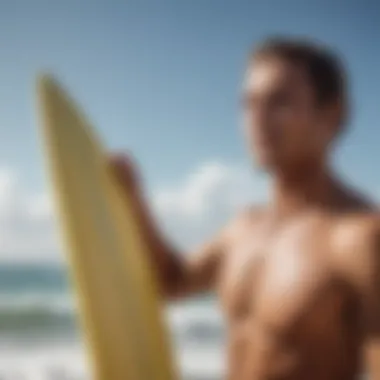
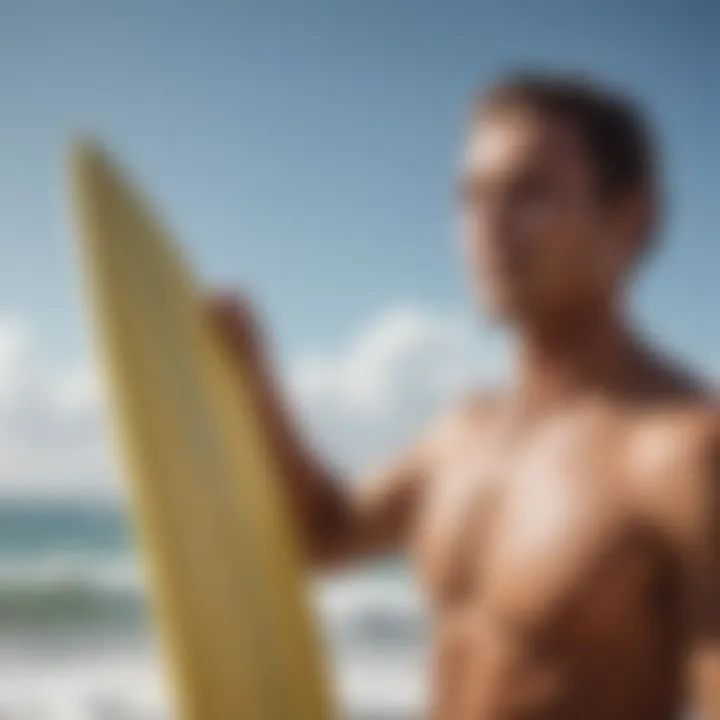
Efficacy of Tropicsport Mineral Sunscreen Lotion SPF
When it comes to surfing, the sun isn't just another element in the mix. It poses risks that can turn a day at the beach into a cause for concern, especially if sun protection isn't properly addressed. Hence, understanding the efficacy of Tropicsport Mineral Sunscreen Lotion SPF 30 is crucial for surfers looking to protect their skin while riding those waves.
Broad-Spectrum Protection
Broad-spectrum protection is an important feature that shouldn’t just be taken lightly. Tropicsport Mineral Sunscreen Lotion SPF 30 provides a barrier against both UVA and UVB rays. UVA rays can age the skin prematurely and contribute to skin cancer, while UVB rays are primarily responsible for sunburns. When you're out on the water, soaking up the sun, you want a sunscreen that has your back on both fronts.
It’s not just about feeling good while surfing; it’s about the peace of mind that you’re effectively shielded from potential long-term damage.
- UVA Protection: Look out for labels that mention broad-spectrum as these sunscreens provide a measure of defense against rays that penetrate deeper into the skin.
- UVB Protection: SPF (Sun Protection Factor) specifically measures how well a product can protect your skin from UVB rays. With a rating of 30, Tropicsport offers protection for about 30 times longer than if you weren’t wearing any sunscreen, assuming proper application.
- Skin Reactions: Many surfers report fewer skin irritations when using mineral-based sunscreens like Tropicsport compared to their chemical counterparts.
In comparing various products, the efficacy of Tropicsport stands out, as it includes natural ingredients that include non-nano zinc oxide. This formulation not only protects the skin effectively but also keeps harmful chemicals out of the eco-sensitive marine environment, aligning with the needs of conscientious surfers.
Water Resistance and Longevity
If there’s one thing surfers know, it’s that the ocean has a way of testing your limits—your stamina and your sunscreen’s resilience. The water resistance of a sunscreen is a parameter that’s often overlooked until you're halfway through a session and feel that familiar sting of sunburn. Tropicsport flaunts water resistance for up to 80 minutes, a feature that catches the eye of every dedicated surfer.
Here’s why water resistance matters:
- Extended Protection: This allows surfers to paddle back out without the constant worry of needing to reapply every couple of minutes.
- Formulation Stability: Unlike chemical sunscreens that may wash away easily, mineral-based options create an actual physical barrier on the skin, holding up better against water exposure and sweat.
- Reapplication Strategy: Knowing that you have solid protection for at least 80 minutes means you can focus more on your ride and less on your skin. But of course, reapplying after each session or when you know you’ve been in the water too long is always a good idea.
Ultimately, the effectiveness in terms of water resistance and broad-spectrum protection makes Tropicsport Mineral Sunscreen Lotion SPF 30 a reliable companion for surfers looking to enjoy their time on the waves without the looming threat of sun damage.
"The right sunscreen is not simply an option; it’s an essential part of being a responsible surfer. Protect your skin and enjoy your ride!"
In a nutshell, efficacy isn’t just about numbers; it’s about the assurance that the product is doing its job while you’re out there enjoying the ocean’s embrace.
Application Techniques for Optimal Protection
When it comes to shielding oneself from the sun’s relentless rays, especially while riding the waves, how you apply sunscreen can be just as crucial as the product you choose. Proper application techniques ensure that the sunscreen performs at its best, providing optimal protection against harmful UV radiation. This section delves into timing, frequency of application and tips for mindful application that are especially relevant for surfers, where exposure is frequent and often prolonged.
Timing and Frequency of Application
One of the first considerations for any surfer is knowing when to apply Tropicsport Mineral Sunscreen Lotion SPF 30 for maximum effectiveness. Ideally, applying the lotion 30 minutes prior to jumping in the water allows the active ingredients to fully bind to the skin, creating a robust barrier against UV rays. This is a crucial step that is frequently overlooked.
Moreover, the frequency of reapplication cannot be stressed enough. It’s recommended to reapply the sunscreen every two hours, or immediately after swimming or sweating. Many surfers underestimate the power of the sun, especially on bright days when the reflection off the water can intensify exposure. Carrying a small travel-size of the sunscreen in your surf bag ensures that it’s readily available for those essential touch-ups.
Key Points to Remember:
- Apply sunscreen 30 minutes before sun exposure.
- Reapply every two hours, or more frequently if wet.
- Sun can reflect off water, increasing UV exposure.
Mindful Application on Surfaces
Even the most effective sunscreen won't do much good if it is not applied correctly. Mindful application of Tropicsport involves ensuring that every exposed area is covered thoroughly. Pay special attention to high-risk areas like the ears, back of the neck, and tops of feet, as these are often neglected—resulting in painful sunburns.
In addition to bare skin, protecting other surfaces such as your lips and scalp is vital. Using a lip balm with SPF and wearing a UV-blocking hat can complement the lotion’s effectiveness. Consider also your wetsuit or rash guard. If you’re only partially covered, ensuring that the exposed areas are fully protected should be a top priority.
"Neglecting to cover even small areas can leave you vulnerable to painful sunburn, which can ruin your surfing experience and lead to longer-term skin damage."
Guidelines for Mindful Application:
- Use a liberal amount of sunscreen—most adults need about an ounce (enough to fill a shot glass) to cover the body.
- Apply in a generous and even layer; don’t skimp on the product.
- Make sure to rub in thoroughly until no white residue remains, especially on mineral-based formulas like Tropicsport.
Environmental Considerations in Sunscreen Use
The discussion surrounding sunscreens is no longer limited to their effectiveness against harmful UV rays. Increasingly, it encompasses their environmental impact, especially for surfers who spend extended time in ocean waters. Understanding the intersection of personal care and environmental stewardship is crucial for preserving our oceans and the ecosystems that inhabit them. Many traditional sunscreens, particularly those containing certain chemicals, can pose significant risks to marine life.
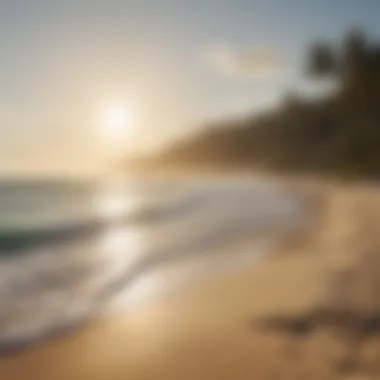
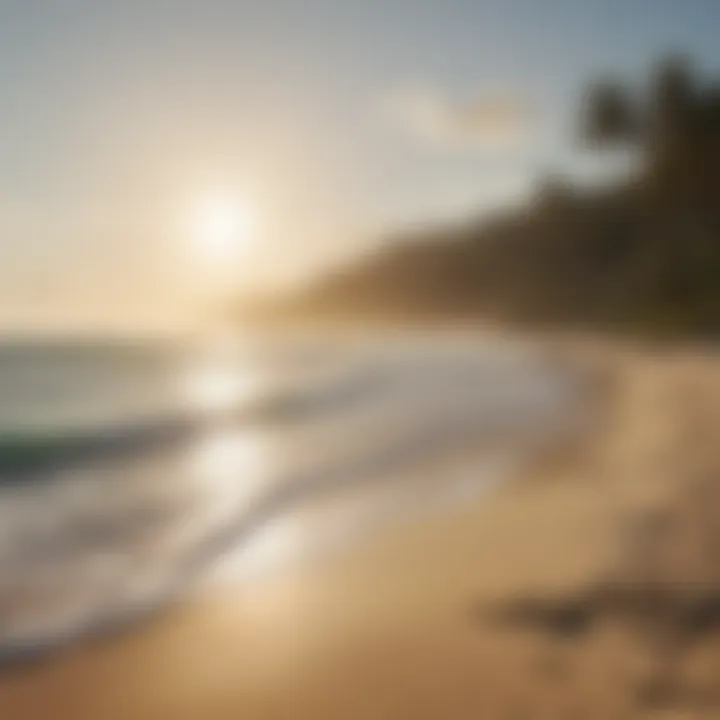
"What we use on our skin doesn't just wash off—it can change the very nature of the water we love to surf in."
Impact of Sunscreen on Marine Life
Recent studies indicate that some common ingredients in many sunscreens, like oxybenzone and octinoxate, can lead to coral bleaching and disrupt the growth of aquatic organisms. When surfers apply sunscreen and then enter the water, these chemicals can leach into the ocean, creating hazardous conditions for marine ecosystems. Highly sensitive species like corals are particularly vulnerable, relying on a delicate balance of nutrients and sunlight. The interference from these chemicals not only affects their growth but can also contribute to broader ecological consequences.
Fish and other marine life can absorb these substances, which may enter the food chain, impacting not just the health of marine habitats but also the health of humans who consume seafood. As surfers, recognizing the adversity that these ingredients cause is imperative. A shift towards more environmentally friendly options can be beneficial—not only for marine biodiversity but also for ensuring the long-term sustainability of surfing as an activity.
Choosing Eco-Friendly Sunscreens
Making the switch to eco-friendly sunscreens involves understanding ingredient labels and opting for products that utilize safer alternatives. Mineral-based sunscreens, like Tropicsport Mineral Sunscreen Lotion SPF 30, often use zinc oxide or titanium dioxide, which physically block UV rays rather than chemically absorbing them. These ingredients tend to have a lower impact on marine ecosystems.
When selecting an eco-friendly sunscreen, consider the following:
- Ingredient Transparency: Look for brands that openly disclose their ingredients and embrace non-toxic formulations.
- Water-Resistant Options: While water resistance is essential, ensure that it does not come at the cost of harmful chemicals.
- Biodegradability: Choose products that break down naturally over time, minimizing their presence in the marine environment.
- Certification: Look for eco-certifications that verify a product's commitment to environmental safety.
Summary Points
- Understand the Risks: Be aware of the impact certain sunscreen ingredients can have on marine life.
- Emphasize Safety: Prioritizing mineral-based sunscreens can reduce environmental harm.
- Make Informed Choices: Engage with brands that hold themselves accountable via sustainable practices.
In the end, as surfers and stewards of the ocean, we carry the responsibility of making informed choices that enhance both our health and the health of our seas.
Comparative Analysis with Other Sunscreen Products
When it comes to protecting skin from harsh UV rays, it’s crucial to compare various options in the market. A careful examination of Tropicsport Mineral Sunscreen Lotion SPF 30 against its competitors not only highlights its strengths but also aids surfers and outdoor adventurers in making informed choices. Surfers, instructors, and marine biologists may all have unique needs, and understanding these distinctions can enhance safety while enjoying aquatic activities.
Market Alternatives to Tropicsport SPF
In the vast sea of sunscreen products, several alternatives compete for attention. Brands like Badger and Neutrogena offer swirling options, each touting benefits that appeal to different user preferences. Here are some notable alternatives:
- Badger Balm SPF 30: A favorite among natural sunscreen enthusiasts, this product features organic ingredients and a thick consistency that promises effective coverage. It's particularly appealing to surfers looking for eco-friendly options.
- Neutrogena Beach Defense SPF 30: This offers a lighter feel and aggressive water resistance but leans toward a chemical formulation. It's well-suited for those who prioritize convenience over natural compositions.
- Coppertone WaterBabies SPF 50: Often marketed for children, its gentle yet effective formulation draws families to the beach. However, surfers might find that the formula does not hold up as well in harsher environments.
Evaluating these alternatives can guide surfers in deciding what's best for their personal preferences and lifestyle.
Pros and Cons of Different Sunscreen Types
When we delve deeper into sunscreen types, there's a real split between mineral and chemical options. Each has its own set of pros and cons that surfers need to consider deeply.
Mineral Sunscreens (like Tropicsport SPF )
Pros:
- Immediate Protection: As soon as it’s applied, it offers protection, reducing the wait time before you can hit the waves.
- Less Irritation: Generally more tolerable for sensitive skin, making it suitable for extended periods in the sun.
Cons:
- Thicker Texture: Can feel heavy or greasy, which may not appeal to everyone.
- White Cast: The application might leave a visible residue, making some users self-conscious.
Chemical Sunscreens (like Neutrogena Beach Defense)
Pros:
- Absorbs Quickly: The lightweight formula allows for easy application without feeling heavy.
- Variety of Options: Offers a wide range of formulations, catering to different skin types.
Cons:
- Potential Irritation: Ingredients may irritate sensitive skin or eyes, particularly when sweating.
- Reef Concerns: Some chemical components can harm marine life, particularly in coral-rich areas.


"Understanding the ins and outs of sunscreen products is not just about choosing what's popular. It's about knowing what fits your surfing lifestyle and protects your skin while being conscious of the environment."
A keen eye on these differences empowers surfers and outdoor enthusiasts to select the best product tailored to their needs. Whether it’s the robust composition of Tropicsport or the lighter appeal of alternatives, the surfer’s guide to sunscreen is about aligning preferences with performance. In essence, the choice of sunscreen can ultimately contribute to a more enjoyable and safer time in the sun.
User Feedback and Reviews
User feedback and reviews play a pivotal role in shaping the perspective around any product, and Sunscreen is no diffrent. For surfers, selecting a sunscreen is not just about marketing claims; it's about finding a product that stands up to the rigors of long hours in the sun, salt water, and the potential rigors of a wipeout. Feedback from actual users helps in discerning efficacy, application methods, and overall user satisfaction, creating a narrative that's far more relatable than corporate messaging.
The benefits of accessing user reviews are multifold:
- Real-World Testing: Surfers put their sunscreen through everyday conditions, providing insights on performance over time.
- Diverse Experiences: Feedback encompasses a variety of skin types and surfing conditions, delivering a broader understanding of the product's adaptability.
- Honest Assessment: Surfers often share their successes and failures, which leads to informed decisions rather than merely accepting marketing noise.
Given the myriad challenges surfers face, be it UV exposure or water resistance, understanding user experiences with Tropicsport Mineral Sunscreen Lotion SPF 30 helps in evaluating its actual reliability in real surfing scenarios. It’s through the tapestry of feedback that surfers can glean whether this product really delivers on its promises.
Surfers' Experiences with Tropicsport
Surfer reviews of Tropicsport Mineral Sunscreen Lotion SPF 30 often highlight both the highs and the lows of their experiences. For many, the lotion has become a staple in their beach gear, marking its territory firmly in their sun protection choices. Users appreciate its physical sunscreen formulation, recognizing its efficacy in providing a protective barrier against harsh UV rays.
Many surfers note, "I’ve used this sunscreen for a few months now, and it kept my skin safe during marathons in the ocean. No burns, just fun!" This kind of positive reinforcement speaks volumes about the product's ability to offer decent protection.
However, not all experiences are flawless. Some surfers mention that it can be a bit on the greasy side, which, while providing solid coverage, can feel heavy under the hot sun. One surfer once shared, "It works wonders, but on really hot days, I wish it felt lighter on my skin."
Expert Opinions on Efficacy
Expert opinions on Tropicsport Mineral Sunscreen Lotion SPF 30 contribute another layer of credibility to its reputation. Dermatologists often highlight the importance of mineral-based sunscreens for skin health, particularly for individuals spending extended time outdoors. Using ingredients like zinc oxide or titanium dioxide, Tropicsport's formula is generally regarded as safer for marine ecosystems and effective for direct sun exposure.
A notable point from a recent expert review states, > "Mineral sunscreens like Tropicsport serve as a reliable shield against harmful UV rays, significantly reducing the risk of skin damage for active individuals, especially surfers who are frequently exposed to harsh sun conditions."
Moreover, experts recommend a proper application to ensure effectiveness. They emphasize that proper reapplication every two hours is crucial, particularly after sweating or swimming, to maintain its protective capabilities.
In summary, user feedback and expert opinions together create a comprehensive panorama of Tropicsport Mineral Sunscreen's usefulness. Combined insights help surfers not only appreciate what works but also understand potential shortcomings, fostering a more informed choice when selecting their sun protection gear.
Navigating SPF Ratings and Regulations
Understanding SPF ratings and regulations is key for surfers seeking effective sun protection. It allows them to make informed choices about sunscreen, ensuring they're getting the right protection for their aquatic adventures. Knowledge of SPF can also help surfers navigate the often murky waters of sunscreen marketing, where claims and reality don’t always align.
Understanding Sun Protection Factor Ratings
Sun Protection Factor (SPF) ratings indicate the level of protection a sunscreen provides against UVB rays, which are chief culprits in causing sunburn and skin cancers. The relationship between SPF ratings and actual protection isn’t entirely straightforward. Here’s a summary:
- SPF Basics: An SPF rating tells you how long you can stay in the sun without burning relative to how long you’d last with no protection. For instance, if you usually start to burn after 10 minutes, an SPF 30 theoretically allows you to stay in the sun for about 300 minutes without burning, assuming proper application and reapplication.
- Practical Considerations: It’s crucial to note that many factors affect this duration. Intensity of sun, skin type, and even water exposure can influence how effective SPF is. No sunscreen can offer absolute protection, making application techniques and environments vital to consider.
- Debunking Myths: There’s a common belief that higher SPF numbers mean exponentially better protection. This isn’t strictly true; for instance, SPF 30 blocks about 97% of UVB rays, while SPF 50 blocks roughly 98%. While the difference may seem minor, a high SPF can encourage longer sun exposure, potentially leading to neglecting proper reapplication.
It's also worth noting that surfers, who are frequently in the waves and at risk from reflective surfaces, should pay special attention to this rating.
Recent Changes in Sunscreen Regulations
Sunscreen regulations have evolved, responding to growing scientific evidence regarding health and environmental consequences. Here are some key points:
- Ingredients Scrutiny: Recently, there’ve been pushes globally to phase out certain harmful chemicals in sunscreens, such as oxybenzone and octinoxate, known for their destructive effects on coral reefs and marine habits. Regulations now require transparency about ingredients, ensuring that surfers can better choose eco-friendly options.
- Labeling Requirements: New regulations necessitate clearer labels that accurately describe what criteria the sunscreen meets, whether it’s broad-spectrum protection or water resistance. When shopping for sunscreen, surfers must now look for trustworthy labels that clearly indicate product strengths and weaknesses.
- Impact on Products: These changes have prompted many brands to reformulate their products. Tropicsport, for instance, prides itself on offering mineral options that align with these regulations, minimizing environmental harm while ensuring skin safety.
Ultimately, with knowledgeable consumers, the industry shifts toward safer ingredients and practices—benefiting both surfers and the planet. By understanding SPF ratings and keeping up with regulatory changes, surfers can better protect their skin and the environments they love.
End
In the realm of surfing, the significance of proper sun protection cannot be overstated, and this article has navigated through the essential elements concerning Tropicsport Mineral Sunscreen Lotion SPF 30. Surfers, instructors, and anyone who spends extended hours under the sun need to grasp how integral sunscreen is to safeguarding skin health while enjoying aquatic adventures. Here's a look back at the key considerations that shape the decisions surfers face when selecting a sunscreen.
Summarizing Key Points
- Importance of Ingredients: Understanding that Tropicsport’s formulation is mineral-based means recognizing it creates a physical barrier against harmful UV rays. This is a vital aspect for surf enthusiasts who prioritize skin safety.
- Efficacy and Longevity: The broad-spectrum protection alongside noteworthy water resistance indicates that the sunscreen doesn’t just wear off with a splash. Instead, it promises prolonged defense against UV exposure while in the water.
- Application Techniques: Knowing when and how often to apply sunscreen greatly affects its effectiveness. Mindful application aids in comprehensive coverage, ultimately enhancing protection and reducing the chances of sunburn.
- Environmental Impact: Discussions on how certain sunscreens affect marine ecosystems underline the significance of choosing eco-friendly options. Surfers have a unique responsibility to protect the waters they cherish, and Tropicsport stands out for its commitment to this cause.
- User Feedback: Positive reviews from fellow surfers and experts provide valuable insights into real-world performance, lending confidence to users considering this lotion as part of their sun safety arsenal.
Final Thoughts on Sun Protection for Surfers
"In the waves of change, we find our true direction." - Anonymous
By prioritizing sun protection, surfers can enjoy the thrill of catching waves while safeguarding their long-term skin health and contributing to the well-being of marine environments. Now, armed with this knowledge, surfers can seamlessly blend sun safety into their passion, ensuring that the joy of surfing continues for generations to come.















